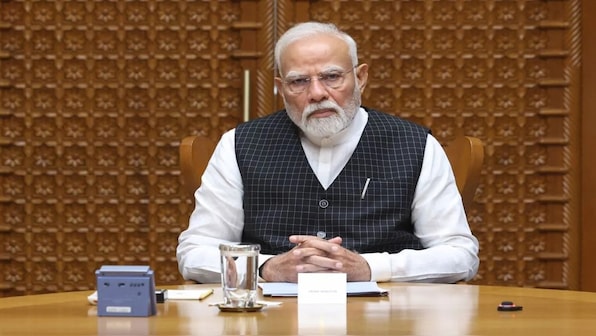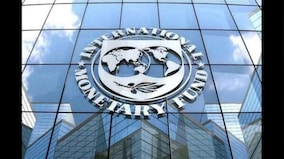Readers of this column know that my arguments are rooted in facts and data. I go where evidence leads me. What I am about to argue in this piece, however, is based on circumstantial evidence. The scenario analysis that this essay will offer is incumbent on connecting the disparate dots.
Nothing about the current India-Pakistan crisis, prima facie, makes sense.
The heinous crime, the religious profiling of victims, seemingly incongruent developments ahead of the terror attack, Pakistan’s strange behavior, the Narendra Modi government’s response and even the Opposition’s reaction cannot be fully understood unless we delve beneath the surface and grasp the role played by India’s greatest adversary that uses deception as a weapon and strikes from behind the shadows.
I am talking of China.
I posit that the unprecedented attack on India’s “soul”, as the prime minister has put it, has been masterminded by China, and it has used Pakistan as an expendable prophylactic device to inflict damage on India at a very specific geopolitical inflection point. I also posit that the BJP-led government understands the true gamut of the challenge and is accordingly calibrating its response at the risk of courting ire from its own core base.
To China, the rise of India is as big a challenge as the unipolarity of the United States. Unlike Washington that pursued a policy of engagement with Beijing and actively aided the stupendous rise of a peer competitor, hyper-realist China seeks to dominate Asia and slow down the rise of India, its biggest regional competitor that has as many people as China does, enjoys demographic advantage and is embarking on the path of reform.
In a recent piece, I have elaborated on why China is in deep trouble over Donald Trump’s tariffs contrary to the narrative pushed by Chinese state-controlled press and Trump-hating western media outlets. As China’s factory activity shrinks at its fastest pace in 16 months in April and the manufacturing sector takes a battering due to America’s 145% tariff on Chinese imports, Beijing has been particularly alarmed over Apple’s decision to pivot away from China and move its iPhone assembly lock, stock and barrel to India.
According to a report by Financial Times, Apple plans to “source from India the entirety of the more than 60mn iPhones sold annually in the US by the end of 2026.” The Cupertino-based company with a net worth of $3 trillion is not only one of the most valuable firms in the world (next only to Microsoft), it’s also considered to be the flagbearer of global supply chain efficiency. Apple’s shifting of iPhone production to India is a massive vote of confidence in India’s stability and policy framework.
As India’s markets show signs of revival in March, with Nifty 50 index climbing 6.3% – its biggest monthly rise in 15 months – and Sensex registering a 5.1% upswing after a bearish spell, Chinese markets are experiencing a concurrent downturn that drew significant state intervention.
In real terms, Indian markets offer a more lucrative, stable outlook than tariff-beaten China where investor anxiety over domestic economic uncertainties and regulatory overreach is evident.
If India becomes the next manufacturing hub and preferred destination for global supply chain network, it represents an acute problem for China. Chinese economy is already slated to significantly slow down with global banks revising their forecasts. Amid this, when domestic demand is yet to take off, the shifting of global supply chains away from China and the China-dominated South-East Asian arc to India is a geo-economic setback and a geopolitical hazard for Beijing.
If you were the CCP, whose legitimacy depended on continued economic prosperity for Chinese people and a promise of uninterrupted growth, this prolonged economic downturn, and bleaker outlook would present an existential crisis.
Under the circumstances, it makes sense for the CCP to prepare a strategic ambush that would hammer India along its known fault lines, upstage its economic momentum, inject instability and puncture the global optimism around India. An unstable India involved in kinetic conflict in its neighbourhood is bad for business. It’s even worse for shifting of global supply chains.
It is my contention that the Pahalgam terror attack is an elaborate trap set up by China with active participation from its vassal state Pakistan, and the seemingly disparate events are part of a strategic ambush that draws India into a costly war of attrition over Kashmir, reverses the recent gains in the troubled Valley and lowers confidence in the resilience of Indian economy at a time when it is poised to take off.
Military-run Pakistan was an eager participant in this game of deception. It’s not just a matter of leverage that Beijing holds over Rawalpindi generals. Beijing does, of course. Xi Jinping can make Asim Munir strip naked in a chowk if he wishes to. The Pakistani army chief is facing a combination of challenges unprecedented since the inception of the Pakistani state.
The military’s writ over the country is eroding. The new generation sees a fast-growing India next door and turns Pindi khakis into a meme fest. Restive Balochistan is threatening to break away, posing the biggest internal security challenge. Ties with Afghanistan are at an all-time low, the tribal regions are edgy. The agents of terror that Pakistan has nurtured for so long are turning against the state. Most of all, Pakistani qaum appear disillusioned with the army’s perennial grip over the state and seeks to break free under a leader who remains in jail with a puppet government in power.
What better for the extremely unpopular Munir than to whip up a nationalist frenzy and iron over the widening cracks in the state? The easiest way to do so is to engineer a terror attack on India, test the limits of New Delhi’s deterrence and tap into the old playbook – present the military as the sole bulwark against an ‘aggressive’ Hindustan.
It puts in perspective the provocative statement by Munir out of the blue where he harped on the “two nation theory”, doubled down on Islamofascism and called Kashmir Pakistan’s “jugular vein”. It is now evident that Munir was acting under instructions to prepare the ground for a hate crime against Hindus through a vicious terror attack targeting unarmed, defenceless civilians holidaying with their families in Kashmir.
This was a low-risk option for Munir. Pakistan is aware of Modi government’s strategic calculus of imposing costs for cross-border terrorism and New Delhi’s decisive edge in conventional warfare. It wouldn’t have risked an inevitable military retaliation had the plan not been underwritten by China.
China’s footprints are everywhere. It is shielding Pakistan at the UNSC, providing diplomatic cover fire, projecting the terror-sponsoring country as the ‘victim’ to soften India’s attempts at Pakistan’s diplomatic isolation and is even hinting at coming to Pakistan’s aid should the need arise. The Chinese foreign ministry, soon after India’s vow of retribution, stated that it “fully understands Pakistan’s legitimate security concerns and supports Pakistan in safeguarding its sovereignty and security interests.”
China has also drawn a false equivalence between the two sides, amplified Pakistan’s call for “independent probe”, and absolved Pakistan of all complicity even though the lead terrorist has been identified as Hashim Musa, a former para commando of Pakistan’s elite force now involved with LeT.
The terrorists, according to Indian probe agencies, were carrying Huawei satellite phone (banned in India) and ultra sophisticated, encrypted Chinese communication equipment known as ‘Ultra Set’ to avoid detection. These secure devices, according to ET, are customized by Chinese companies for the Pakistan army to bypass commercial mobile technologies and operate on radio waves linked to a control station across the border. “The messages are compressed and transmitted via Chinese satellites to a master server in Pakistan.”
It is inconceivable that China was unaware of the fact that Kashmir-focussed terrorist outfits were using its cutting-edge gear to wreak havoc on India. It indicates China’s complicity in the terrorist act and presents a huge challenge for New Delhi which isn’t just fighting a Pakistan-sponsored insurgency in Kashmir – a subversive foreign policy objective of a sworn adversary – but also the entire might of the Chinese state.
According to SIPRI data, China supplies 81% of Pakistan’s arms imports in the past five years, and it includes co-production of advanced JF-17 fighter jets, Hangor-class subs and selling of advanced systems such as long-range reconnaissance drones and Type 054A guided-missile frigates. In short, the state of Pakistan might be a bankrupt banana republic, but its military will never be short of cutting-edge resources and modern infrastructure to keep parity with India.
This isn’t China’s ‘iron brotherhood’ or any such nonsense but strategic altruism to balance India and bog it down in the region.
The larger plan behind the attack carried out by jihadis is morbidly fascinating. The meticulous religious profiling of the victims, all Hindu males except one Muslim pony rider who tried to save the tourists, and the humiliation that the victims underwent in the last few minutes of their lives – be it being forced to recite Islamic verse or stripped down to check circumcision – before getting headshots while shell-shocked women and children looked on, point to the possibility that the murders were specifically designed to evoke maximum anger, outrage and communal resentment in a Hindu-majority nation led by a nationalist government. In at least one case, a Hindu woman who begged to be killed along with her husband was told, “go and tell Modi”.
This wasn’t an indiscriminate terrorist act but a cold-blooded massacre of Hindus to arise passions among Indians in such a way that the government has no choice but to go to war with the neighbour it accuses of orchestrating the crime. Vassal state Pakistan was being used a proxy, the agent provocateur, while the real mastermind enjoys plausible deniability.
The trap was laid so that India plunges headlong into a kinetic retaliation where escalation dominance would be nearly impossible. It may further lead to a 3.5 front war where China stress tests India’s LAC vulnerabilities at precisely the time when New Delhi would be stretched and occupied by Pakistan.
Interestingly, China scholar Aadil Brar pointed out on X that China’s ‘India’s experts’ are hinting at movement of Chinese troops stationed at Ladakh should India attempt “deliberate suppression of Pakistan” in an article published in Chinese language media.
It might not be a pure coincidence that the regime in power in Bangladesh, that ousted prime minister Sheikh Hasina and has dragged Bangladesh back by several decades to torture its Hindu minorities and create another ‘East Pakistan’ to India’s east, is emitting signals of “occupying India’s North-Eastern states should India attack Pakistan”. It might sound like a meth-fuelled dream, but a degree of calculation is evident.
The final piece of the puzzle is the curious behaviour of India’s Opposition. Instead of habitual criticism and scepticism of the government’s actions, a tactic the parties adopted during the ‘surgical strike’ or the Balakot air strikes, this time they are going to the right of the Modi government and goading it to go to war with Pakistan.
The clamour for kinetic action in the immediate aftermath of the massacre reached such a crescendo that even Pakistan adopted psy-op tactics to add to the pressure – publicly declaring that it anticipates a strike from India within the next 24-48 hours. It was as if the decks were being cleared by even the adversaries to force India to take an impulsive action.
It is worth noting that while Modi government signalled a terrible retribution, it has refrained from plunging headlong into a kinetic retaliation despite keen anticipation.
It even, rather unexpectedly, threw in a shock announcement of ‘caste census’ that not only significantly reduced the ‘audience cost’, but also caught the Congress Party totally off-guard.
Throwing the ‘caste census’ bone to the Rahul Gandhi-led Congress, which has expectedly gone to town in a frenzy of triumphalism, the government has bought some time that keeps Pakistan on tenterhooks, forcing it to remain in fervent anticipation and waste precious resources in sabre-rattling. It also enables India to retain the element of surprise in retribution that will come at a time and place of India’s choosing.
This has, of course, caused considerable erosion of political capital for the BJP where its own support base has subjected the government to withering criticism for somersaulting on caste census and delaying the retaliation, but the critics are likely missing the bigger picture. In refusing the bait, India has shown alertness and thwarted an elaborate Chinese design. The game, however, isn’t over yet.
The writer is Deputy Executive Editor, Firstpost. He tweets as @sreemoytalukdar. Views expressed in the above piece are personal and solely those of the author. They do not necessarily reflect Firstpost’s views.


)
)
)
)
)
)
)
)
)